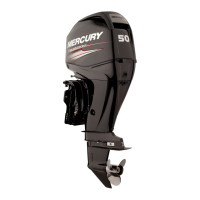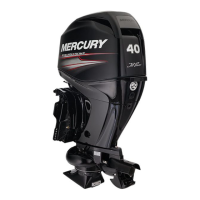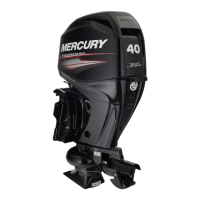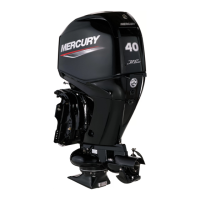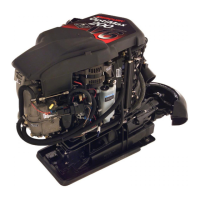2B-2 - ELECTRICAL and IGNITION 90-817643R1 DECEMBER 1996
Specific gravity of electrolyte varies not only with percent-
age of acid in liquid but also with temperature.As tempera-
ture drops, electrolyte contracts, so that specific gravity in-
creases. Unless these variations in specific gravity are
taken into account, specific gravity obtained by hydrometer
may not give a true indication of concentration of acid in
electrolyte.
A fully charged battery will have a specific gravity reading
of approximately 1.270 at an electrolyte temperature of 80°
F (27° C). If electrolyte temperature is above or below 80°
F, additions or subtractions must be made in order to obtain
a hydrometer reading corrected to 80° F standard. For ev-
ery 10° F (3.3° C) above 80° F, add 4 specific gravity points
(.004) to hydrometer reading. Example: A hydrometer
reading of 1.260 at 110° F (43° C) would be 1.272 corrected
to 80° F, indicating a fully charged battery.
For every 10° below 80° F, subtract 4 points (.004) from the
reading. Example: A hydrometer reading of 1.272 at 0° F
(-18° C) would be 1.240 corrected to 80° F, indicating a par-
tially charged battery.
SPECIFIC GRAVITY CELL COMPARISON TEST
This test may be used when an instrumental tester is not
available. To perform this test, measure specific gravity of
each cell, regardless of state of charge, and interpret re-
sults as follows: If specific gravity readings show a differ-
ence between highest and lowest cell of .050 (50 points) or
more, battery is defective and should be replaced.
Electrolyte Level
Check electrolyte level in battery regularly. A battery in use
in hot weather should be checked more frequently because
of more rapid loss of water. If electrolyte level is found to be
low, then distilled water should be added to each cell until
liquid level rises approximately 3/16” (4.8mm) over plate.
DO NOT OVERFILL, because this will cause loss of elec-
trolyte and result in poor performance, short life and exces-
sive corrosion.
!
CAUTION
During service, only distilled water should be added to
the battery, not electrolyte.
Charging A Discharged Battery
The following basic rules apply to any battery charging situ-
ation:
1. Any battery may be charged at any rate (in amperes)
as long as spilling of electrolyte (from violent gassing)
does not occur and as long as electrolyte temperature
does not exceed 125° F (52° C). If spewing of electro-
lyte occurs, or if electrolyte temperature exceeds 125°
F, charging rate (in amperes) must be reduced or tem-
porarily halted to avoid damage to the battery.
2. Battery is fully charged when, over a 2-hour period at
a low charging rate (in amperes), all cells are gassing
freely (not spewing liquid electrolyte), and no change
in specific gravity occurs. Full charge specific gravity
is 1.260-1.275, corrected for electrolyte temperature
with electrolyte level at 3/16” (4.8mm) over plate. For
most satisfactory charging, lower charging rates in am-
peres are recommended.
3. If, after prolonged charging, specific gravity of at least
1.230 on all cells cannot be reached, battery is not in
optimum condition and will not provide optimum per-
formance; however, it may continue to provide addi-
tional service, if it has performed satisfactorily in the
past.
4. To check battery voltage while cranking engine with
electric starter motor, place red (+) lead of tester on
positive (+) battery terminal and black (-) lead of tester
on negative (-) battery terminal. If the voltage drops be-
low 9-1/2 volts while cranking, the battery is weak and
should be recharged or replaced.
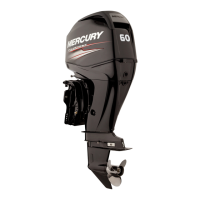
